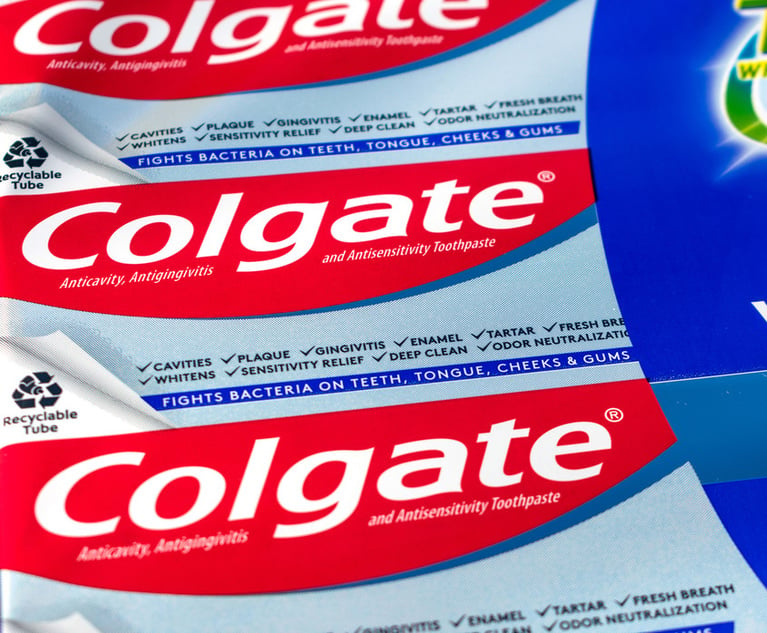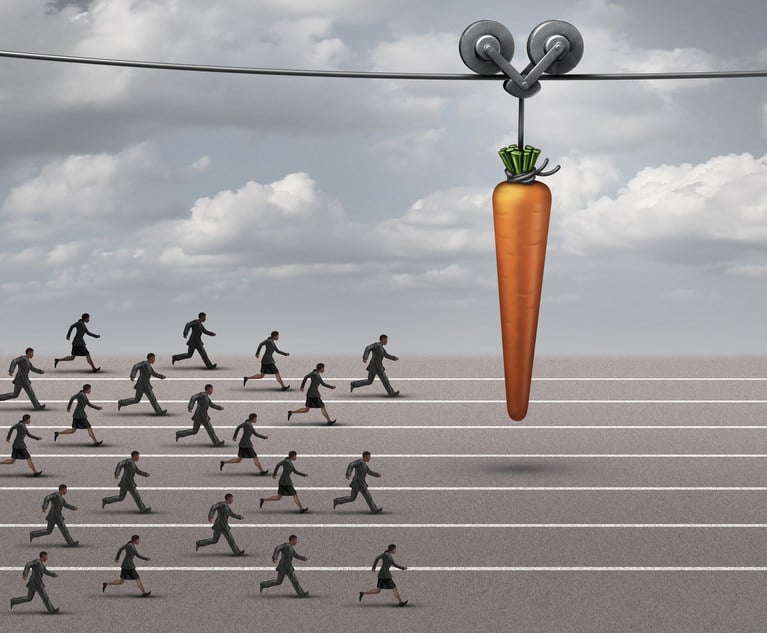Hairstyles and Anti-Discrimination Laws: What You Need to Know
California Senate Bill 188 would extend the definition of racial discrimination to include bias against hair textures and styles associated with race and ethnicity while the New York City Human Rights Commission in February introduced guidance reinforcing the right of New Yorkers under city human rights law to maintain hairstyles linked to racial, ethnic and cultural identity. Employment law experts believe the laws will be trendsetting.
April 23, 2019 at 01:06 PM
7 minute read
 Photo: Shutterstock
Photo: Shutterstock
Recent actions by New York City and California state governments to extend legal protections against racial discrimination to include hairstyles linked to ethnic, racial or cultural identity are likely the start of a trend that employers will need to consider, employment lawyers say.
In California, a state legislator recently introduced a bill, expected to become law, that would extend the definition of racial discrimination to include bias against hair textures and styles as traits associated with race and ethnicity. California Senate Bill 188, introduced by Sen. Holly Mitchell, D-Los Angeles, is supported by a national alliance of civil rights groups that says it intends to pursue similar legislation in other states. As introduced, the bill applies to workplace discrimination but the Senate may consider amending it to include schools and public accommodations.
Ogletree Deakins Nash Smoak & Stewart shareholder Michael Nader, who is based in Sacramento, said in an interview recently that “the California law makes it very difficult for a company to demonstrate a legitimate non-discriminatory reason for a grooming rule that has a disparate impact on employees who are members of a particular race.”
“Companies should be aware of this development in harassment and discrimination law, as legislatures will likely pick up on this in other states. It is one of the new frontiers of civil rights laws,” Nader said.
The New York City Human Rights Commission in February introduced guidance reinforcing the right of New Yorkers under city human rights law to maintain hairstyles—commonly associated with African heritage—that do not require straightening the hair, such as locs, cornrows, twists, braids, Bantu knots and Afros. The law also prohibits discrimination for those who wear their hair uncut or untrimmed, or who wear head coverings because of religious or cultural practices. Employers who violate the law could pay up to $250,000 in penalties to the city, and uncapped damages to the victim.
Devjani Mishra, a shareholder at Littler Mendelson in New York, said of the commission's guidance, “it is not a new protected class, the city commission has simply codified its thinking, based on how it has been interpreting the law for some time. If you have a dress code or grooming standards that necessarily will affect one group of people more than another based on race or characteristics associated with race, it is racial discrimination. If your grooming standards are racially discriminatory, the city is going to treat them as if they are racially discriminatory.” She said she has been fielding calls from clients on the matter since the guidance was announced.
The issue has been bubbling to the surface for years: For instance, in 2009, two African-American men complained to the Chicago Commission on Human Relations that they'd been refused entry to a nightclub because of their braided hairstyles. The commission in 2011 concluded that even though the nightclub's policy didn't explicitly require different grooming standards for black patrons, it discriminated against a hairstyle associated with one racial group, which imposed a barrier to that group's ability to use a public accommodation.
The issue also has been in federal courts, but the Sixth and Eleventh circuits have upheld lower court decisions against plaintiffs who alleged racial discrimination connected to their grooming: In the U.S. Court of Appeals for the Sixth Circuit, employees of the Kentucky Department of Parks, who were terminated in 2004 for failure to comply with the department's appearance code, sued for violation of their constitutional and due process rights under state and federal laws in Roberts v. Ward. They lost in the district court, and on appeal in 2006.
More recently, in the Eleventh Circuit, in Jones v. Catastrophe Management Solutions, the U.S. Equal Opportunity Employment Commission pursued a case of Title VII racial discrimination against an employer who withdrew a job offer based on an African-American woman's refusal to change her dreadlock hairstyle. Chastity Jones lost in the federal district court in Alabama, and a three-judge panel at the Eleventh Circuit also decided against her. It refused also to hear an appeal en banc. The NAACP Legal Defense and Educational Fund then filed a petition in 2018 for the U.S. Supreme Court to review that decision, but the U.S. Supreme Court also refused to hear the case.
Despite these decisions, social and legal trends are moving in the direction of recognizing hair texture and grooming as closely tied to race and ethnicity, experts say.
In 2014, in an influential move, the United States military changed longstanding grooming policies to accommodate braids, and in 2017 updated the rules to allow some twisted and coiled styles called locs. Plaintiffs have won court victories and settlements in cases where religious discrimination was alleged over grooming codes prohibiting certain hairstyles such as Rastafarian dreadlocks and beards.
“I expect further legislation throughout the country advocating the designation of a broader range of traits that qualify as being sufficiently tied to race such that they are expressly protected by the anti-discrimination and harassment laws,” Nader said.
Nader suggests that employers may want to review and revise grooming policies to ensure that they do not ban, limit or otherwise restrict hair texture or hairstyles that have historical associations with race, such as Afros, locs, twists and braids. He provided the following suggestions:
- Appearance policies should be solely based on rules that are nondiscriminatory, have no disparate impact, and are uniformly applied—like a policy requiring employees to keep their hair neat and clean, and to secure their hair for bona fide safety or hygienic reasons.
- Employers should train managers and supervisors to recognize workplace issues that are related to traits historically associated with a particular race, and should train their managers and supervisors to recognize, respect and address the broader meaning of such issues in the workplace.
- Companies should reinforce their open-door and harassment complaint policies to ensure that any employees with such concerns have a clear opportunity to complain to human resources and have the issue addressed and resolved.
He also warns that “managers and supervisors should be mindful that you don't want to make derogatory statements about a hair texture or style, because that could raise discrimination or harassment claims.”
Mishra said that as dress codes and workplace norms are evolving with demographic changes, and policies must adapt. “This is a real issue,” she said. “As employers have been saying, 'We want to be more diverse and more inclusive.' It is whipsawing the message to say we want to be diverse, but we want everyone to look the same when they get here.”
Read More:
Federal Appeals Court Rules for Employer in Dreadlock Discrimination Case
Corrections Trainee's Religious Discrimination Suit Over Shaving Mandate Remanded for Hearing
UPS Settles Religious Discrimination Suit With EEOC for $4.9 Million
This content has been archived. It is available through our partners, LexisNexis® and Bloomberg Law.
To view this content, please continue to their sites.
Not a Lexis Subscriber?
Subscribe Now
Not a Bloomberg Law Subscriber?
Subscribe Now
NOT FOR REPRINT
© 2025 ALM Global, LLC, All Rights Reserved. Request academic re-use from www.copyright.com. All other uses, submit a request to [email protected]. For more information visit Asset & Logo Licensing.
You Might Like
View All
How This Dark Horse Firm Became a Major Player in China

Colgate Faces Class Actions Over ‘Deceptive Marketing’ of Children’s Toothpaste

Internal Whistleblowing Surged Globally in 2024, So Why Were US Numbers Flat?
6 minute read
Trending Stories
Who Got The Work
J. Brugh Lower of Gibbons has entered an appearance for industrial equipment supplier Devco Corporation in a pending trademark infringement lawsuit. The suit, accusing the defendant of selling knock-off Graco products, was filed Dec. 18 in New Jersey District Court by Rivkin Radler on behalf of Graco Inc. and Graco Minnesota. The case, assigned to U.S. District Judge Zahid N. Quraishi, is 3:24-cv-11294, Graco Inc. et al v. Devco Corporation.
Who Got The Work
Rebecca Maller-Stein and Kent A. Yalowitz of Arnold & Porter Kaye Scholer have entered their appearances for Hanaco Venture Capital and its executives, Lior Prosor and David Frankel, in a pending securities lawsuit. The action, filed on Dec. 24 in New York Southern District Court by Zell, Aron & Co. on behalf of Goldeneye Advisors, accuses the defendants of negligently and fraudulently managing the plaintiff's $1 million investment. The case, assigned to U.S. District Judge Vernon S. Broderick, is 1:24-cv-09918, Goldeneye Advisors, LLC v. Hanaco Venture Capital, Ltd. et al.
Who Got The Work
Attorneys from A&O Shearman has stepped in as defense counsel for Toronto-Dominion Bank and other defendants in a pending securities class action. The suit, filed Dec. 11 in New York Southern District Court by Bleichmar Fonti & Auld, accuses the defendants of concealing the bank's 'pervasive' deficiencies in regards to its compliance with the Bank Secrecy Act and the quality of its anti-money laundering controls. The case, assigned to U.S. District Judge Arun Subramanian, is 1:24-cv-09445, Gonzalez v. The Toronto-Dominion Bank et al.
Who Got The Work
Crown Castle International, a Pennsylvania company providing shared communications infrastructure, has turned to Luke D. Wolf of Gordon Rees Scully Mansukhani to fend off a pending breach-of-contract lawsuit. The court action, filed Nov. 25 in Michigan Eastern District Court by Hooper Hathaway PC on behalf of The Town Residences LLC, accuses Crown Castle of failing to transfer approximately $30,000 in utility payments from T-Mobile in breach of a roof-top lease and assignment agreement. The case, assigned to U.S. District Judge Susan K. Declercq, is 2:24-cv-13131, The Town Residences LLC v. T-Mobile US, Inc. et al.
Who Got The Work
Wilfred P. Coronato and Daniel M. Schwartz of McCarter & English have stepped in as defense counsel to Electrolux Home Products Inc. in a pending product liability lawsuit. The court action, filed Nov. 26 in New York Eastern District Court by Poulos Lopiccolo PC and Nagel Rice LLP on behalf of David Stern, alleges that the defendant's refrigerators’ drawers and shelving repeatedly break and fall apart within months after purchase. The case, assigned to U.S. District Judge Joan M. Azrack, is 2:24-cv-08204, Stern v. Electrolux Home Products, Inc.
Featured Firms
Law Offices of Gary Martin Hays & Associates, P.C.
(470) 294-1674
Law Offices of Mark E. Salomone
(857) 444-6468
Smith & Hassler
(713) 739-1250








